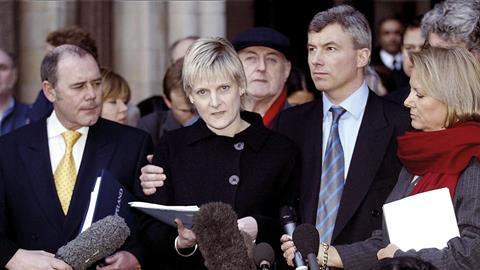Applicants for judicial posts will be aware of the five main competencies or, to use a less mangled form of English, abilities. As an aide memoire these are:
1. Exercising judgement;
2. Possessing and building knowledge;
3. Assimilating and clarifying information;
4. Working and communicating with others; and
5. Managing work efficiently.
But is something missing? Maybe ‘tact and diplomacy’, ‘empathy’, the omnipresent ‘diversity and inclusion awareness’? Maybe, but I would suggest a much more fundamental skill, without which any judicial officeholder is likely to struggle at times. It is of course ‘numeracy’.

Previous generations were aware of the importance of ‘the 3Rs’ – reading, ’riting and ’rithmetic – and these are still vital building blocks for acquiring knowledge. However the Judicial Appointments Commission seems to consider that numeracy is insufficiently important to justify either testing in any sort of way or checking that an appropriate GCSE qualification is held.
Ah, but (I can hear you say) we are wordsmiths and generators of reasoned, internally consistent decisions based on impeccable precedent and logic. What need have we of the base arts of the beancounter?
To an extent, the answer is that you do not. However, numbers have a habit of raising their heads in many situations and in many forms. To take a few examples of items that might form part of an evidential bundle:
- Company financial statements;
- Financial forecasts and projections;
- Tax returns;
- Forms E in family proceedings;
- Data from financial institutions;
- Graphs and charts; and
- Statistics.
Sometimes one comes across complex factual situations involving money flows such as VAT carousel fraud, inter-company group transactions, and more topically cryptocurrency transactions. Many of these will in turn have complicated transaction details underlying them. Also, many cases involving film production tax relief will have what is called in the industry a ‘waterfall’, setting out how gross receipts from a film are allocated to the various parties involved before the investor gets their share of the remainder.
Information is often provided by a spreadsheet. If one is unaware of how these work (and I strongly suspect that quite a few judicial office-holders are in that position), how is one to be able to interpret and check the information shown in it?
If a commercial agreement contains financial formulae or conditions, how can one deal with these without numeracy? And if a public or private sector body provides information which has emerged from a computer system, how is one to do any sort of reasonableness check without the appropriate mental tools? The spectre of the Horizon accounting system, which caused the wrongful imprisonment and suicide of a number of subpostmasters, is a stark reminder of how computer systems do not always work as they should.
The importance of some understanding of statistics cannot be overstated. Many will remember the case of Sally Clark (pictured above), who was prosecuted after her two babies apparently both died of sudden infant death syndrome (SIDS). The paediatrician Sir Roy Meadows argued that the two deaths could be considered independent events. If the chance of one cot death was 1 in 8,500, the chance of two cot deaths was 1 in 73m. Clark was convicted. There are a number of problems with this seductively persuasive argument:
1. Can these two deaths really be treated as unrelated events? If the events were unrelated, the chance of the second death happening is 1 in 8,500.
2. Even if the probability of 1 in 73m is correct, it does not logically follow that there is only a 1 in 73m chance that the mother did not kill them.
3. Using crime statistics, the probability that two children will be murdered in the same household is 1 in 2bn. It is therefore much more likely that the babies died of SIDS than that they were murdered.
If you are struggling with point three, think of it this way:
- In any population of 2bn, there will be one event where two children in the same household are murdered (UK crime statistics).
- In that same population of 2bn, there will be about 27 occasions where two children in the same household will die of SIDS (2bn/73m).
- But we know that in only one of those events will the children have been murdered.
- Therefore on the other 26 occasions the children will have died of SIDS.
- Therefore the chance of Clark having killed her children is about 4% (1/27).
Clearly if you were the judge trying a case like this, it would be of the utmost importance that you understood this.
Finally, on a lighter note, did you know that there is a 50% probability of two children in a class of 23 sharing a birthday?
Julian Stafford, a law graduate, is a chartered accountant, accredited mediator and panel member of the First Tier Tribunal
































2 Readers' comments